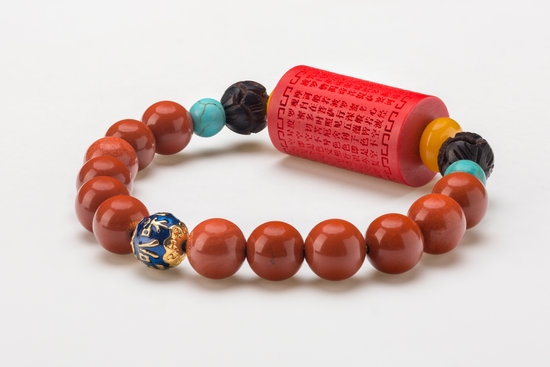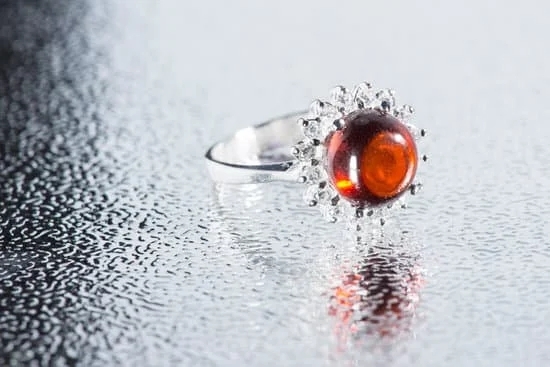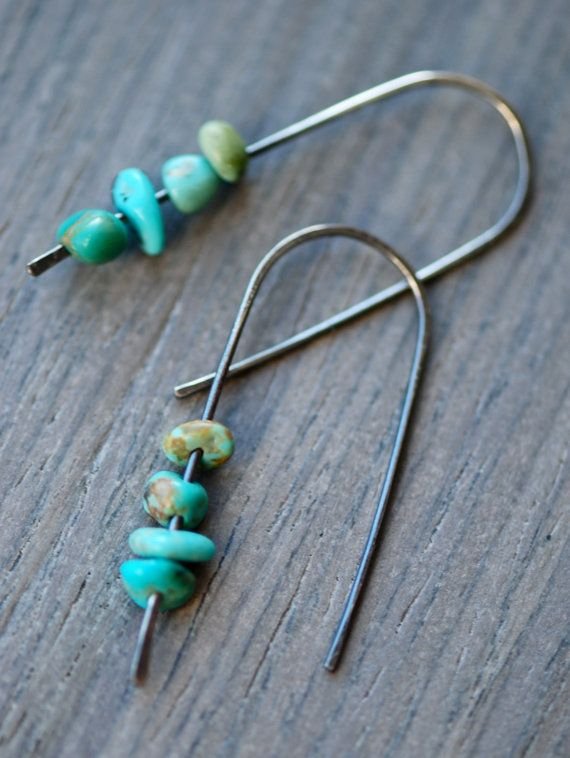The history of the word jewelry is a fascinating journey that uncovers the cultural and artistic significance of these adornments. From ancient times to the modern era, jewelry has played a significant role in human civilization, symbolizing status, wealth, and personal expression. This article delves into the origins of jewelry, exploring its evolution through different time periods and cultures.
Jewelry has been an integral part of human adornment for thousands of years, with evidence dating back to prehistoric times. The use of various materials and techniques has evolved over time, reflecting the cultural and technological advancements of different civilizations. Understanding the origins of jewelry provides valuable insight into its symbolism and significance in society.
Ancient civilizations around the world developed unique jewelry making techniques and used a variety of materials to create intricate pieces. From shells and stones to precious metals and gemstones, the craftsmanship behind ancient jewelry reflects the creativity and artistry of early humans. The evolution of jewelry making techniques mirrors the social, religious, and economic developments within each culture, shaping its meaning and importance throughout history.
Ancient Jewelry Making Techniques and Materials
Ancient civilizations have left behind a rich history of exquisite jewelry making techniques and the use of various materials. In ancient times, jewelry was crafted using materials such as gold, silver, bronze, and precious gemstones like emeralds, rubies, and sapphires. The intricate designs and skilled craftsmanship of these ancient pieces continue to amaze people today.
One of the most well-known ancient jewelry making techniques is the art of filigree. This delicate and intricate metalworking technique involves creating intricate designs with thin threads of metal, usually gold or silver. Another common technique was granulation, which involved fusing tiny spheres of metal onto a metal surface to create decorative patterns. These techniques required exceptional skill and precision, showcasing the high level of craftsmanship achieved by ancient artisans.
In addition to metals, ancient civilizations also used organic materials such as shells, ivory, and even bones to create jewelry. The use of natural materials not only reflects the available resources at the time but also highlights the creativity and resourcefulness of ancient craftsmen.
The combination of various materials and techniques resulted in diverse styles and designs that were characteristic of each civilization’s unique culture and traditions. This incredible diversity in ancient jewelry making continues to inspire contemporary artisans to this day.
Evolution of the Word Jewelry and Its Origins
The word “jewelry” has a rich and fascinating history, dating back to ancient times. The term itself comes from the Old French word “jouel” which means “a plaything,” reflecting the early connotation of jewelry as personal adornment rather than a symbol of wealth or status. Its origins can also be traced back to the Latin word “jocale,” which has a similar meaning.
In ancient civilizations, jewelry was often made from materials such as shells, stones, and bones, with designs that held cultural, religious, or symbolic significance. As societies evolved and trade routes expanded, the materials used for making jewelry became more diverse, with precious metals and gemstones becoming increasingly popular. This evolution of materials and techniques demonstrates the transformative nature of the word “jewelry” over time.
The significance of jewelry in different cultures is evident in the various designs and styles that emerged throughout history. From intricate Egyptian amulets to delicate Roman gold earrings, each piece tells a story of craftsmanship and cultural identity.
The word “jewelry” itself reflects this diversity, as it encompasses a wide range of ornaments and decorative objects from different parts of the world. As society progressed, so did the complexity and variety of jewelry, leading to its status as an art form that continues to evolve to this day.
| Evolution of Jewelry | Origin |
|---|---|
| Ancient Times | Old French word “jouel” |
| Materials Used | Precious metals and gemstones |
| Cultural Significance | Diverse designs from different cultures |
Significance of Jewelry in Different Cultures and Time Periods
Jewelry holds a significant place in different cultures and time periods, with each civilization attributing unique meanings and symbolism to these adornments. The history of the word jewelry dates back to ancient civilizations, where it played a crucial role in religious rituals, social status, and personal adornment.
In various cultures, jewelry was worn as a symbol of protection, power, or spirituality. It served as a way for individuals to showcase their wealth and social standing within the community. For example:
- In Ancient Egypt, jewelry was not only seen as a symbol of wealth and status but also held religious significance. Amulets and talismans were commonly worn to protect the wearer in the afterlife.
- In Ancient Greece and Rome, jewelry adorned both men and women as a symbol of social status and power. Certain pieces were also worn during religious ceremonies to honor the gods.
During the medieval period, jewelry continued to play an important role in society. Nobility often wore elaborate pieces encrusted with precious gemstones as a display of wealth and power. It was also during this time that craftsmanship became more intricate, with filigree work and detailed engravings becoming popular.
As we look back at the significance of jewelry in different cultures and time periods, we can see how it has always been intertwined with human history and societal development. The evolution of jewelry not only reflects changing fashion trends but also serves as a window into understanding the beliefs and values held by various civilizations throughout history.
Influence of Jewelry in Ancient Civilizations
Jewelry has played a significant role in the history of various ancient civilizations, representing not only beauty but also power, status, and cultural significance.
Egyptian Civilization
One of the most well-known ancient civilizations that valued jewelry was ancient Egypt. Egyptians believed that jewelry could bring protection and good luck to the wearer in this life and the afterlife. Jewelry was not only worn by royalty but also by individuals from all social classes. The materials used for making jewelry in Egypt were diverse, ranging from gold, silver, and precious stones to more common materials such as glass and clay.
Greek and Roman Civilizations
In ancient Greece and Rome, jewelry also held a prominent place in society. It was often worn as a symbol of wealth and power, with elaborate pieces crafted for both men and women. Greek and Roman jewelry often featured intricate designs inspired by nature, mythology, and religious symbols. Precious metals such as gold and silver were frequently used, along with gemstones like pearls, emeralds, and sapphires.
Indian Civilization
Ancient Indian jewelry is known for its intricacy and symbolism. Traditional Indian jewelry included pieces such as necklaces, earrings, bangles, and nose rings adorned with colorful gemstones. In Indian culture, jewelry was not merely an accessory; it held spiritual significance and symbolized prosperity, marital status, or specific rituals.
Throughout these ancient civilizations, jewelry served as more than just decorative adornments; it carried deep cultural meanings that reflected the values of the societies in which they were created. Understanding the history of the word “jewelry” allows us to appreciate its enduring significance in human societies across time.
The Renaissance and Jewelry as a Status Symbol
During the Renaissance, which lasted from the 14th to the 17th century, there was a significant shift in the perception and use of jewelry. The era marked a resurgence of interest in art, literature, and culture, and this was reflected in the way people adorned themselves. Jewelry became more than just an accessory; it became a symbol of wealth, status, and power.
The Rise of Elaborate Designs
In Europe, especially among the noble classes, jewelry became increasingly elaborate and intricate during the Renaissance. The use of precious gemstones such as diamonds, rubies, sapphires, and emeralds became more widespread. Intricate metalwork and filigree techniques were also developed during this time period. Goldsmiths and jewelers created pieces that were not only beautiful but also served as symbols of social standing.
Jewelry as a Symbol of Power
The Renaissance saw rulers and monarchs using jewelry as a means to display their power and authority. They commissioned extravagant pieces to showcase their wealth and influence. For example, portraits of prominent figures from the Renaissance often depicted them adorned with opulent jewelry, emphasizing their status in society.
The Influence on Modern Jewelry
The influence of the Renaissance on jewelry can still be seen today. Many modern jewelry designs are inspired by the elaborate styles of this period. The use of intricate metalwork, detailed engravings, and rich gemstones continues to be popular in contemporary jewelry-making. Even though the significance of jewelry has evolved over time, its status as a symbol of social standing can be traced back to the opulent styles of the Renaissance period.
Overall Purpose: This section will explore how the Renaissance period marked a shift in the perception and use of jewelry towards being a symbol of wealth and power through elaborate designs that continue to influence modern trends.
Modernization and Globalization of Jewelry Trends
The modernization and globalization of jewelry trends have significantly shaped the industry, leading to a diverse array of styles and designs that are influenced by different cultures and fashion movements. With advancements in technology and increased connectivity around the world, the accessibility of various jewelry-making techniques and materials has expanded, allowing for a fusion of traditional and contemporary elements in jewelry design.
One significant aspect of the modernization of jewelry trends is the incorporation of sustainable and ethically sourced materials. As awareness about environmental impact and ethical labor practices grows, consumers are seeking out brands that prioritize sustainability in their production processes. This has led to an increase in the use of recycled metals, ethically sourced gemstones, and fair trade practices within the jewelry industry.
Additionally, globalization has played a pivotal role in diversifying jewelry trends by introducing consumers to unique cultural influences from around the world. This has led to a greater appreciation for traditional craftsmanship, such as intricate filigree work from India or delicate enamel artistry from Japan. These global influences have enriched the landscape of modern jewelry design, offering consumers a wide range of options that celebrate different heritage traditions.
- The integration of technology into jewelry design has also revolutionized the industry, with innovations such as 3D printing allowing for intricate and personalized pieces to be created with precision. This technological advancement has opened up new possibilities for customizing jewelry according to individual preferences and has expanded the creative potential for designers.
Moreover, e-commerce platforms have made it easier for small independent jewelers to reach a global audience, contributing to the democratization of access to unique and handcrafted pieces. - The democratization of access to specialized skills through online tutorials and educational resources has empowered aspiring jewelers to learn traditional techniques from different cultures. This cross-cultural exchange has led to an exciting blend of global styles within contemporary jewelry design.
- Finally, social media platforms have played a significant role in shaping modern jewelry trends by providing a space for emerging designers to showcase their work and connect with a wider audience. Platforms like Instagram have become instrumental in shaping consumer tastes by highlighting unique designs from diverse cultural backgrounds while fostering community engagement through hashtags like #jewelryofinstagram or #modernjewelrydesigns.
This digital landscape has fueled an era where creativity knows no bounds and where diversity is celebrated within the realm of modern jewelry trends.
The Future of Jewelry
One prediction for the future of jewelry is the increasing use of sustainable and ethical materials. As environmental consciousness becomes more prevalent, consumers are showing a greater interest in eco-friendly and ethical products.
This has led to an emerging trend in the jewelry industry towards using recycled metals, lab-grown gemstones, and ethically-sourced materials. The demand for sustainable jewelry is expected to continue to rise, prompting more designers and manufacturers to adapt their practices to meet these evolving consumer preferences.
Another innovation that is likely to shape the future of jewelry is the incorporation of technology. From smart jewelry that can track health metrics or provide notifications, to 3D printing allowing for intricate and customizable designs, technology is revolutionizing the way jewelry is both made and worn. As wearable technology continues to advance, it is anticipated that traditional jewelry will continue to merge with tech-infused pieces, creating new and innovative ways for individuals to adorn themselves.
In addition, the globalization of fashion and design will play a significant role in shaping the future of jewelry trends. As international influences continue to blend together, we can expect to see a diverse range of styles and cultural inspirations reflected in jewelry designs. The accessibility of global markets through e-commerce platforms also means that consumers will have more exposure to unique and culturally-rich pieces from different parts of the world.
| Predictions & Innovations | Effects |
|---|---|
| Sustainable & Ethical Materials | Rise in demand for eco-friendly options |
| Technology Integration | Expansion into wearable technology |
Conclusion
In conclusion, the history of the word jewelry is a fascinating exploration of human creativity, culture, and craftsmanship. From its ancient origins using shells, bones, and stones to modern innovations with precious metals and gemstones, jewelry has always played a significant role in human civilization. The evolution of the word itself reflects the diverse cultural influences and global significance of this art form.
Throughout history, jewelry has held deep cultural and symbolic importance in different societies around the world. It has been used to signify wealth, status, spirituality, and personal adornment. The enduring appeal of jewelry lies not only in its aesthetic beauty but also in its ability to convey meaningful messages and traditions across generations.
As we look towards the future of jewelry, it is clear that this art form will continue to evolve and inspire new trends and innovations. With advancing technology and changing societal values, the ways in which we create and perceive jewelry are likely to undergo further transformations.
However, what remains constant is the timeless beauty and cultural significance of jewelry as a reflection of human creativity and expression. The history of the word jewelry serves as a reminder of its enduring legacy throughout time and across cultures.
Frequently Asked Questions
Where Does the Term Jewelry Come From?
The term “jewelry” comes from the Old French word “jouel” which means “plaything” or “something of little value”. Over time, it evolved to refer to precious ornaments and adornments.
What Is the History and Origin of Jewellery?
Jewelry has a long history that dates back to ancient civilizations such as the Egyptians, Greeks, and Romans. These early societies used jewelry not only for adornment but also as a symbol of status, wealth, and religious significance. In different cultures, jewelry has been crafted from various materials including gold, silver, gemstones, shells, and even bones.
What Is the Old English Word for Jewelry?
The Old English word for jewelry was “gierde”. This term encompassed a wide range of personal adornments such as rings, necklaces, bracelets, and brooches. In Old English society, jewelry was often worn as a symbol of social status and was sometimes buried with the deceased as part of burial customs.

Welcome to my jewelry blog! My name is Sarah and I am the owner of this blog.
I love making jewelry and sharing my creations with others.
So whether you’re someone who loves wearing jewelry yourself or simply enjoys learning about it, be sure to check out my blog for insightful posts on everything related to this exciting topic!





